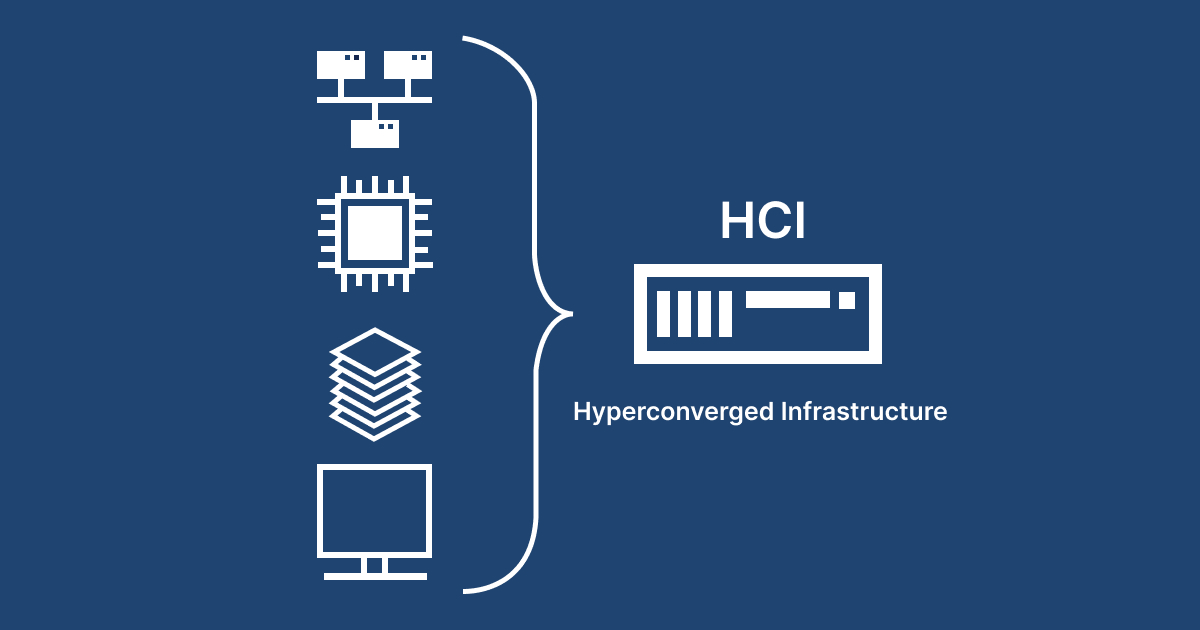Hyperconverged infrastructure, otherwise known as HCI, is an innovative data management technology that is transforming how businesses manage their IT workloads. By integrating storage, networking resources, and computing into a unified system, hyper-converged infrastructure allows IT teams to simplify the data storing processes. In turn, HCI benefits organizations with reduced IT costs, flexibility, and scalability. If your organization is considering HCI systems, it is essential to understand what hyper-converged infrastructure is and how it allows you to optimize your IT resources. The idea is to give you a deeper understanding of HCI systems, so you can determine whether it is a suitable solution for your IT needs and overall business processes.
So, let’s dive deep and learn everything about hyper-converged infrastructure. Its benefits, why organizations are adopting the HCI system, how to plan HCI implementation in your organizations, and more.
What is Hyper-converged infrastructure?
Built on a software-defined architecture, HCI integrates the computing, storage, and networking resources into a single system. This simplifies many things for IT teams as opposed to handling legacy infrastructures where all these components are usually separate. Another significant advantage of using hyper-converged infrastructure is it virtualizes the computing, storage, and networking resources. This means IT teams have to handle abstracts instead of physical hardware, as they can create virtual containers and machines to manage these components.
It is also important to note that the software-defined storage nature of HCI allows IT teams to pool resources from multiple servers and unify them into one. This reduces business silos and avoids redundancy.
This architecture of HCI systems facilitates IT teams by simplifying processes. It allows them to manage storage, networking, and computing resources easily from a central field. For context, IT teams equipped with HCI systems can scale up or down their storage needs by adding or removing nodes from the HCI systems.
Components of Hyper-converged Infrastructure
As mentioned, hyper converged infrastructure is a software-defined architecture that combines computing, storage, and networking resources into a single system. Well, let’s look at each component in detail, so you can understand HCI systems better:
1. Software-defined architecture:
One of the critical benefits of HCI systems is their virtualized nature. HCI virtualizes and abstracts physical hardware components into virtual machines, allowing IT teams to manage everything from a central control panel instead of physical servers. This unifies the elements and allows IT teams to modify or improve current processes as per business needs.
2. Storage resources:
HCI’s ability to pool multiple servers into a single entity improves overall business processes. The unified nature of storage devices also allows organizations to scale their data needs without halting their current business processes. Additionally, HCI avoids data duplication and improves overall security by utilizing features such as data deduplication, backups, and more.
3. Networking:
HCI systems use virtual network switches managed by virtualization software. The virtualized nature of HCI allows each component to communicate, enabling organizations to program network isolation and security as needed. For instance, by adding Quality of Service (QoS) features, organizations can eliminate bottlenecks and improve visibility into the network traffic, which will be helpful if there are any errors in the system and take precautionary steps.
4. Compute:
HCI includes compute resources that allow organizations to run applications through virtual containers. Like unified storage resources, HCI pools computing resources from multiple servers, allowing businesses to increase or decrease their computing resources as per business needs. This can be particularly useful for seasonal businesses that need to scale their computing resources during high-demand periods and reduce them during low-demand periods.
Overall, all these components work together to create an integrated and efficient architecture that can pool resources from multiple resources. This allows organizations to improve performance, better scale their resources, and simplify IT processes.
Benefits of Hyperconverged Infrastructure
Hyper-converged infrastructure (HCI) has become popular due to the significant benefits it offers businesses of all sizes. Here are some of the primary benefits of HCI systems for businesses:
1. Simplified IT management:
The HCI system’s most significant benefit is integrating computing, storage, and networking into a single entity. So, IT teams can manage everything from a central control center. This reduces the complex processes and the time it takes for IT teams to manage their operations. This reduces complexity and the time required to manage IT operations. Human error is one of the IT teams’ most common challenges in a traditional environment. HCI’s unified management interface allows IT teams to monitor and manage all resources from a single console, streamlining operations and reducing the risk of human error.
2. Scalability:
Another significant benefit of HCI systems is allowing IT teams to scale up or scale down their storage and computing resources as per will. For instance, an HCI system can pool resources from multiple servers and unify them into a single entity. This allows IT teams to manage their storage and computing resources from software and avoid handling physical components.
3. Cost-effectiveness:
Given that everything is unified into a single system and businesses only have to deal with a single vendor, they have to choose the right vendor for them. The benefit is the long-term cost savings. Additionally, businesses do not have to spend on separate software and hardware licenses, so even in the short term, HCI has its cost savings benefits.
4. Reliability, security, and availability:
HCI systems are resilient and have many security features (depending on your chosen vendors). Most vendors offer HCI systems that have self-healing and data backup characteristics. This is useful because it will create a backup whenever there is a hardware failure. In the traditional environment, a hardware failure can result in an entire system outage, but that is not the case with HCI systems.




